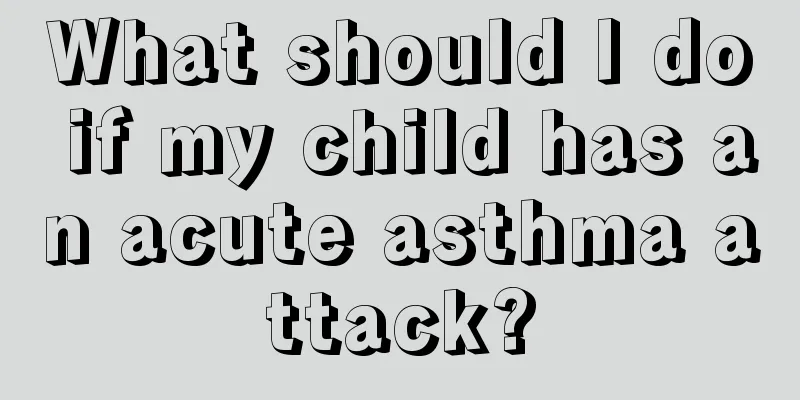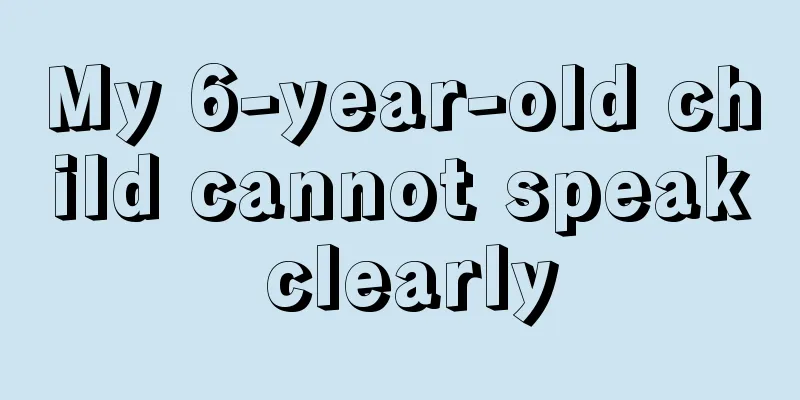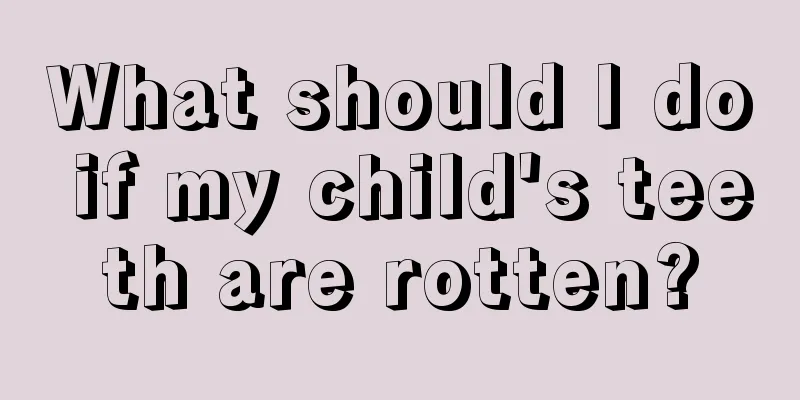The best way to reduce fever in children

|
Children's resistance is relatively poor, so they are particularly prone to fever, which can cause harm to their bodies. Therefore, many families are particularly anxious when their children have a fever, so they want to improve the condition as soon as possible through a physical method of reducing fever. So what are the physical methods for reducing fever in children? Let's take a look at the following introduction. Fever is a common symptom in children. A child's body temperature may fluctuate with climate, diet, crying, thickness of clothing, etc. Fever is also the initial manifestation of many diseases. Generally speaking, the normal body temperature of children is 36℃~37℃ under the armpit. If it exceeds 37.4℃, it can be considered as fever. When a child's body temperature exceeds 38.5 ℃, antipyretic treatment is needed. For various reasons, many parents often dress their children in many clothes or cover them with thick quilts when their children have a fever, in order to make the children sweat, thinking that this will reduce the fever; some parents do not know what to do except taking their children to the hospital for treatment; some parents even think that going to the hospital to let the doctor see how high the child's fever is, so that the doctor can make a diagnosis or cure the child. As a result, many children suffer convulsions due to high fever before seeing a doctor, on the way to the hospital, or after arriving at the hospital before receiving antipyretic treatment. High fever convulsions increase parents' worries. What these parents don’t know is that if a child with a fever has a temperature over 38.5°C when he or she goes to the hospital for treatment, the doctor will first provide antipyretic treatment because this can reduce the risk of febrile convulsions. Therefore, reducing fever first is one of the important measures to reduce high fever convulsions in children. How to reduce fever in children is common knowledge that many parents need to know. Physical cooling is one of the quick, safe and reliable methods. First of all, we should pay attention to indoor ventilation. When children have a fever, they should wear fewer clothes and quilts. This can achieve the purpose of heat dissipation, especially for infants. What we usually call packing cooling is for infants and young children, and it is one of the commonly used cooling methods for infants. But be sure to cover your child's abdomen to prevent it from getting cold. Chills before high fever is a problem that many parents worry about. Some children experience pink skin and cold hands and feet before high fever. This is caused by pyrogens and occurs after a series of pathophysiological reactions. At this time, parents should pay attention to keeping their children warm, especially their limbs, and can also give their children some warm drinks. When a child's body temperature exceeds 38.5℃, using physical methods to lower the temperature is usually safe and effective, and is one of the important measures to reduce the risk of convulsions due to high fever. Physical cooling is suitable for children with high fever and good circulation. There are many physical cooling methods, and parents can usually do them themselves at home. Mainly cold compress on the head, warm water sponge bath or warm water bath. These methods are simple to perform and do not cause adverse reactions to cooling drugs. Cold compresses on the head are suitable for general fever in children. The method is to soak a towel with cold water and apply it to the child's forehead, and change it in time; you can also fill a water bag with cold water and place it under the head to achieve the purpose of cooling the head. Warm water sponge bath is suitable for cooling down children with high fever, especially those with a history of high fever convulsions. The method is to wipe the child's skin with warm water. The water temperature should not be too high. The key areas to be wiped are the neck, armpits, groin, popliteal fossa and other areas where large blood vessels run. Stay in these areas for some time, massaging while bathing. This can dilate the blood vessels and achieve the purpose of heat dissipation throughout the body. However, be careful not to wipe the back of the neck, chest, or abdomen, because these areas are more sensitive to cold stimulation and can reflexively cause adverse reactions such as a slowed heart rate and diarrhea. When wiping, be sure to cover the child's abdomen to prevent the abdomen from getting cold. Also be sure to keep the child warm after wiping. If the child is in good spirits, you can use warm water bathing method, which will have a better cooling effect. After a warm bath, cover your child with clothes and quilts, let him rest, and drink plenty of warm water. In addition, pay attention to observe changes in the child's condition during sponge bathing. If the child has abnormal conditions such as chills, pale face, etc., stop sponge bathing and seek medical attention in time. It is worth mentioning that alcohol baths are no longer recommended. Drug cooling should be carried out under the guidance of a physician. No matter what causes the fever, the child should be allowed to lie down and rest first, and given more water to drink. This can increase urine output and make the child sweat more, which can not only reduce the temperature but also help excrete toxins. Because children's condition changes quickly, children with fever should go to the hospital in time after appropriate antipyretic treatment to avoid delaying the condition. First, soak a towel in cold water, wring it out and place it on the baby's forehead. Prevent blood vessels from constricting during sponge bathing and causing congestion in the head, thereby reducing oxygen consumption in the head. Then prepare a basin of warm water (32-34 degrees Celsius), soak the gauze in the warm water, wring it out and wrap it around your palm. Wipe in the order of side neck - shoulder - outer side of upper arm - outer side of forearm - back of hand; side chest - armpit - inner side of upper arm - elbow - inner side of forearm - palm; shoulder under the neck - buttocks; hip - outer side of lower limb - dorsum of foot; groin - inner side of lower limb - inner ankle; subgluteal groove - back of lower limb - popliteal fossa - heel. Wipe one side before wiping the other side. Keep warm when wiping. At the same time, please note that the baby's forehead, back of the neck, soles of the feet and abdomen should not be wiped. Apply slight force to the armpits, elbows, palms, groin, and popliteal fossa. Measure body temperature after half an hour. wipe The above content introduces some physical therapy methods for reducing fever in children. Therefore, for many children who often have fever and affect their health, in order to get their children’s fever effectively treated as soon as possible, you can use the good physical fever reduction methods introduced above and give your child physical therapy as soon as possible, so as to relieve your child’s fever. |
<<: What are the methods to reduce fever in children?
>>: What are the physical methods to reduce fever in children?
Recommend
Why does the baby's hair grow vertically?
Parents all hope that their children have black a...
How many days does it take to recover from phimosis surgery in children?
It is a common condition for children to have phi...
Why is my baby particularly afraid of heat?
Children's physiques are different from adult...
My baby's myocardial enzyme is high, what's the matter
Nowadays, every child is a treasure in the family...
Three main symptoms of ADHD in children
ADHD in children often manifests itself in sympto...
Can a child take a bath when he has a fever?
It is best not to bathe children easily when they...
Why does my baby's ears discharge yellow fluid with a bad smell?
If you find yellow water flowing out of your baby...
Is it good for children to learn Taekwondo?
Nowadays, we often see some parents taking their ...
What causes glaucoma in children?
The physical health of children is very important...
What are the symptoms of encephalitis in children?
Some children will have some acute infectious dis...
What are the pimples on children's noses?
Children's body resistance is relatively low ...
What causes high platelet count in children?
What is the reason for thrombocytopenia in childr...
What should I do if my baby can't crawl at 11 months old?
Many babies will start to learn to crawl after th...
Green poop for newborns?
Newborn babies are generally unable to speak beca...
Treatment of baby's nosebleed at night
The birth of every new life will make our parents...









